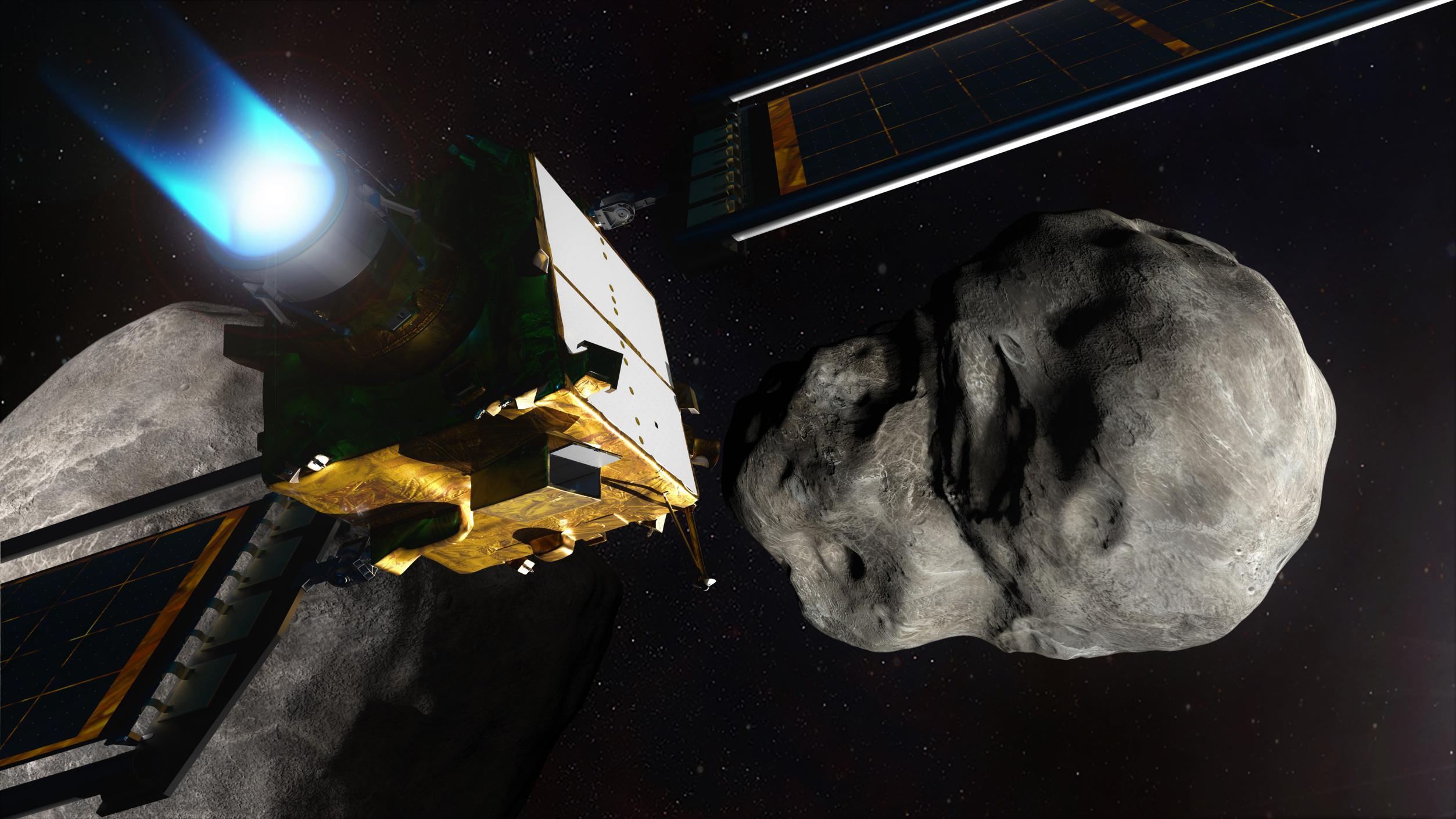
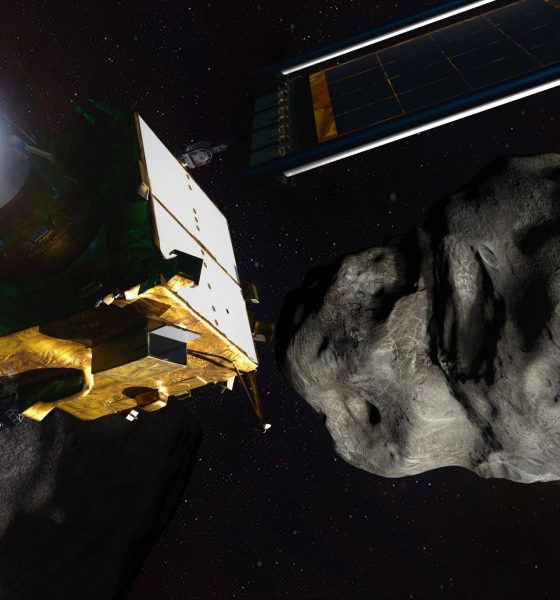
News
SpaceX almost ready to launch NASA asteroid impact spacecraft
Update: The NASA official quoted saying that the DART spacecraft had arrived at Vandenberg on September 27th appears to have been incorrect and may have accidentally confused the arrival of an “advance team” with the arrival of the spacecraft itself.
Science communicator and author David Brown was reportedly on-site on September 29th to watch as the DART spacecraft was carefully packaged for the journey from Maryland’s Johns Hopkins University to its California launch site, obviously making a VSFB arrival two days prior impossible. Nevertheless, now stowed inside an environmentally-controlled shipping container, DART should still arrive at Vandenberg within the next week or two.
Revealed as a side note during live coverage of the space agency’s successful Landsat-9 launch, NASA says that the Double Asteroid Redirect Test (DART) spacecraft has arrived at Vandenberg Space Force Base (VSFB) ahead of a SpaceX Falcon 9 launch less than two months from now.
Weighing around 690 kg (~1500 lb) at liftoff, NASA confirmed that the DART spacecraft and its Italian-built LICIACube smallsat companion are on track to launch out of SpaceX’s VSFB SLC-4E pad on a Falcon 9 rocket no earlier than (NET) November 23rd, 2021. Carrying its small passenger, DART will then make a beeline for binary asteroid pair Didymos and Dimorphos. Respectively measuring around 800 and 170 meters across, DART will ultimately target the smaller of the pair and accelerate to an impact velocity of ~6.6 km/s (4 mi/s or Mach 19).
DART will then rely on a built-in telescope and closed-loop targeting software to home in on and smash into Dimorphos, ultimately using the tiny asteroid system as a sort of sandbox to test theories of asteroid redirection that might one day help humans prevent catastrophic impacts with Earth.
Originally targeted to launch in June 2021 when NASA awarded SpaceX the $69M launch contract (now up to $73M after two small changes) in April 2019, DART has slipped approximately five months in the 2.5 years since when a few minor technical issues arose late in development. Impressively, almost none of those delays appear to have been caused by the COVID-19 pandemic, which cannot be said for a number of other NASA, US military, and commercial satellites and launches.
Set to cost a total of ~$250M including launch services, DART’s main purpose is to determine how exactly an asteroid behaves when impacted by a high-velocity spacecraft. Whereas depictions of asteroid “redirection” in popular science fiction tend to lean towards the “send an arsenal of nuclear bombs” approach, the reality is that bombing most asteroids and comets large enough to threaten the surface of Earth would add uncertainty more than it would mitigate the threat.
Given how little is actually known about the physical characteristics of asteroids, attacking one with a bomb could simply separate a killer asteroid into any number of smaller, still-deadly asteroids – now spread into a shotgun-like pattern of undetectable fragments instead of one large, visible object. Instead, most modern science on the matter now believes that the best route to redirection is a combination of early detection and a (relatively) low-energy impact. A bit like the concept of the butterfly effect, a relatively gentle impact (still akin to 2.5 tons of TNT with DART) years or decades in advance could drastically change the trajectory of the threatening asteroid or comet, causing it to miss Earth. DART won’t directly prevent an asteroid from impacting Earth but hitting the asteroid moon of a larger asteroid should effectively magnify the effect the tiny impact has on its orbital characteristics.
DART will also serve as a technology demonstration, debuting both satellite-class roll-out solar arrays and NASA’s self-developed NEXT-C electric propulsion system. With any luck, it will also help scientifically prove that humans could use a similar approach to save ourselves from a catastrophic space impact event years or decades from now.

News
Tesla dominates in the UK with Model Y and Model 3 leading the way
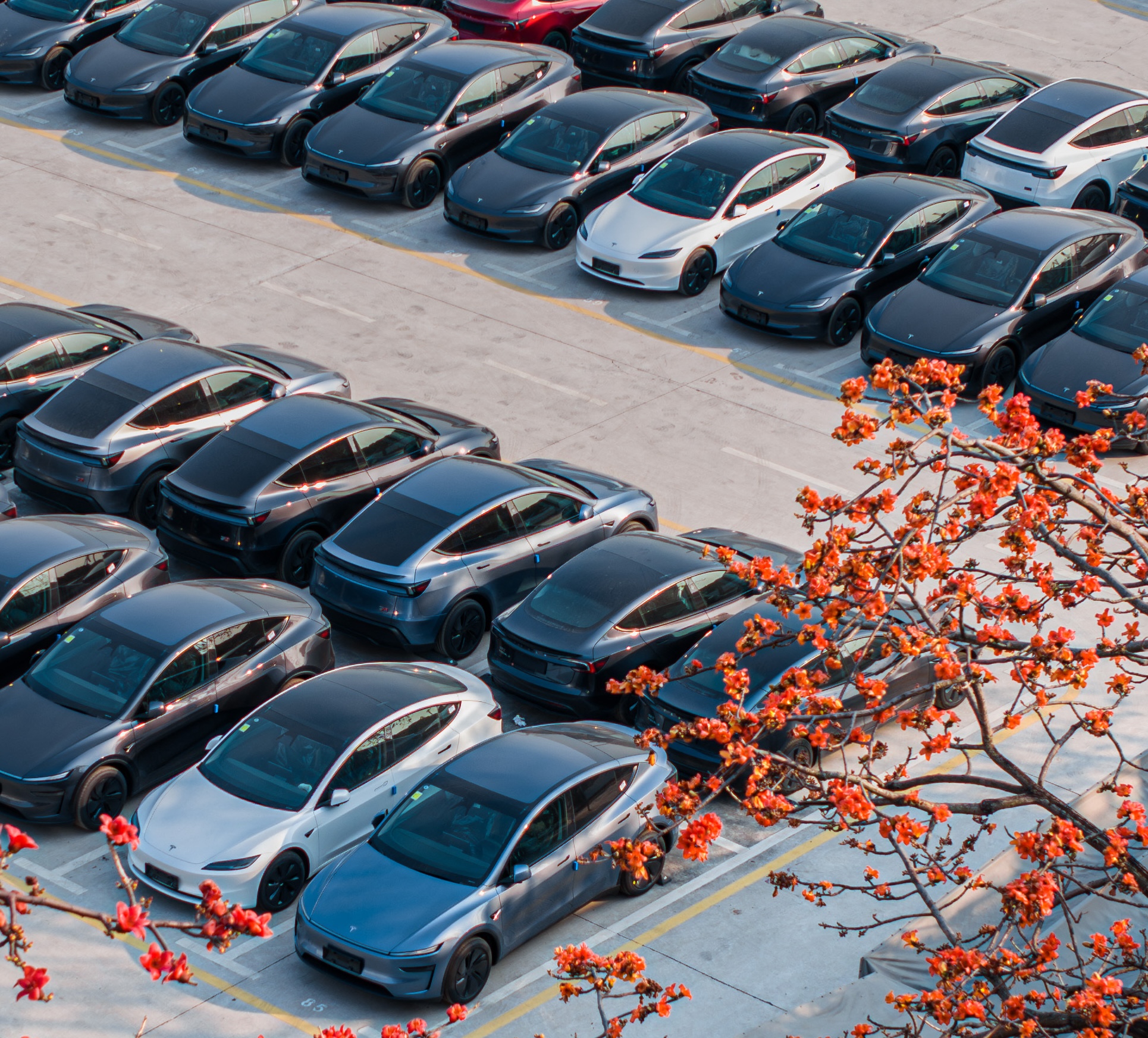
Tesla is dominating in the United Kingdom so far through 2025, and with about two weeks left in the year, the Model Y and Model 3 are leading the way.
The Model Y and Model 3 are the two best-selling electric vehicles in the United Kingdom, which is comprised of England, Scotland, Wales, and Northern Ireland, and it’s not particularly close.
According to data gathered by EU-EVs, the Model Y is sitting at 18,890 units for the year, while the Model 3 is slightly behind with 16,361 sales for the year so far.
The next best-selling EV is the Audi Q4 e-tron at 10,287 units, lagging significantly behind but ahead of other models like the BMW i4 and the Audi Q6 e-tron.
GOOD NEWS 🇬🇧 Tesla is absolutely crushing the UK electric vehicle market in 2025 💥
The numbers are in, and the dominance is clear. With an impressive amount of 42,270 vehicles delivered year-to-date, the brand now commands a solid 9.6% market share of the total auto market 🆒… pic.twitter.com/dkiGX9kzd0
— Ming (@tslaming) December 18, 2025
The Model Y has tasted significant success in the global market, but it has dominated in large markets like Europe and the United States.
For years, it’s been a car that has fit the bill of exactly what consumers need: a perfect combination of luxury, space, and sustainability.
Both vehicles are going to see decreases in sales compared to 2024; the Model Y was the best-selling car last year, but it sold 32,610 units in the UK. Meanwhile, the Model 3 had reached 17,272 units, which will keep it right on par with last year.
Tesla sold 50,090 units in the market last year, and it’s about 8,000 units shy of last year’s pace. It also had a stronger market share last year with 13.2 percent of the sales in the market. With two weeks left in 2025, Tesla has a 9.6 percent market share, leading Volkswagen with 8 percent.
The company likely felt some impact from CEO Elon Musk’s involvement with the Trump administration and, more specifically, his role with DOGE. However, it is worth mentioning that some months saw stronger consumer demand than others. For example, sales were up over 20 percent in February. A 14 percent increase followed this in June.
News
Tesla Insurance officially expands to new U.S. state
Tesla’s in-house Insurance program first launched back in late 2019, offering a new way to insure the vehicles that was potentially less expensive and could alleviate a lot of the issues people had with claims, as the company could assess and repair the damage itself.
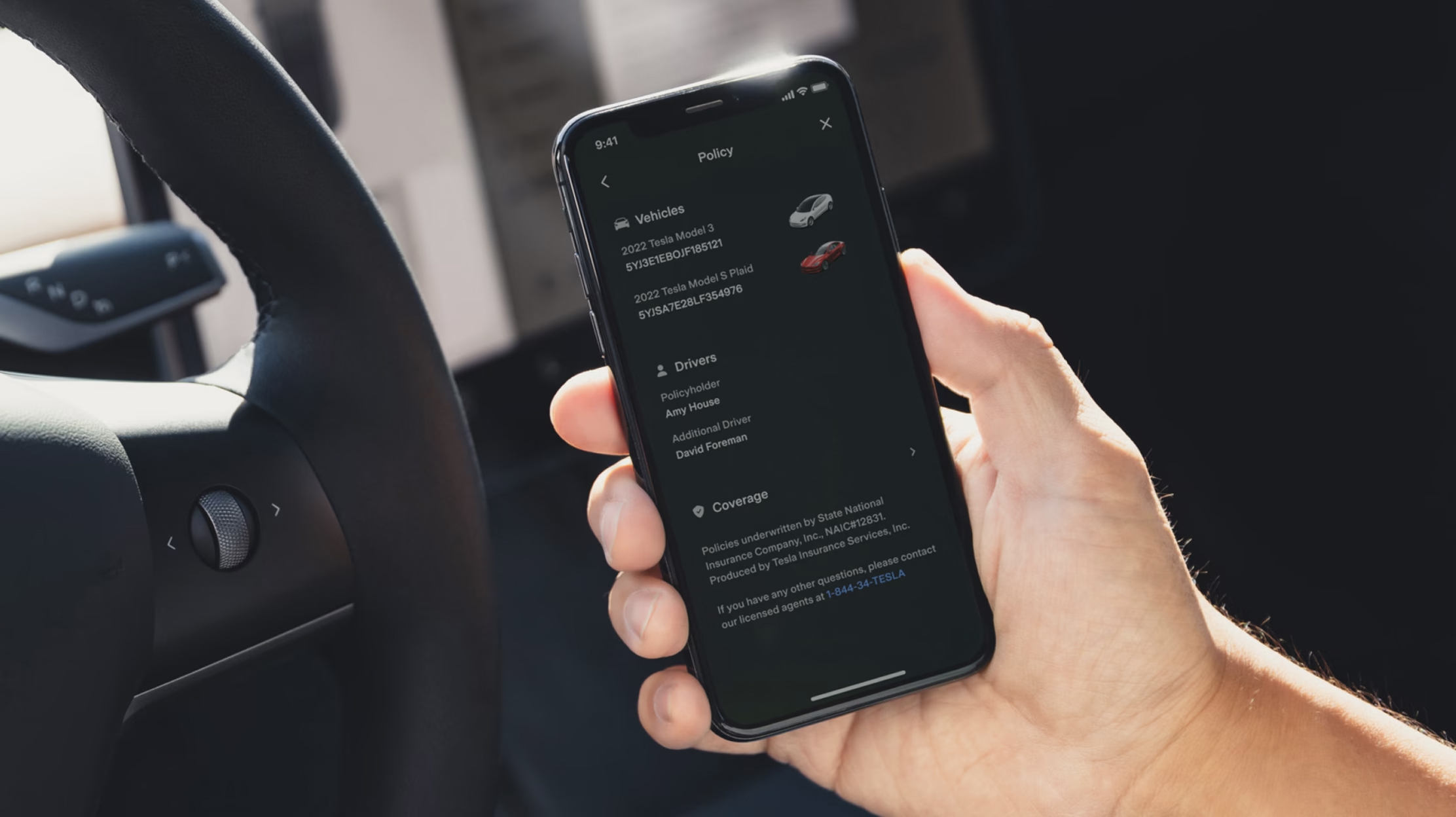
Tesla Insurance has officially expanded to a new U.S. state, its thirteenth since its launch in 2019.
Tesla has confirmed that its in-house Insurance program has officially made its way to Florida, just two months after the company filed to update its Private Passenger Auto program in the state. It had tried to offer its insurance program to drivers in the state back in 2022, but its launch did not happen.
Instead, Tesla refiled the paperwork back in mid-October, which essentially was the move toward initiating the offering this month.
BREAKING: Tesla Insurance has just officially launched in Florida.
This is the first new state to receive @Tesla Insurance in more than 3 years. In total, Tesla insurance is now available in 13 U.S. states (map in thread below of all the states).
Tesla Insurance in Florida uses… pic.twitter.com/bDwh1IV6gD
— Sawyer Merritt (@SawyerMerritt) December 17, 2025
Tesla’s in-house Insurance program first launched back in late 2019, offering a new way to insure the vehicles that was potentially less expensive and could alleviate a lot of the issues people had with claims, as the company could assess and repair the damage itself.
It has expanded to new states since 2019, but Florida presents a particularly interesting challenge for Tesla, as the company’s entry into the state is particularly noteworthy given its unique insurance landscape, characterized by high premiums due to frequent natural disasters, dense traffic, and a no-fault system.
Annual average premiums for Florida drivers hover around $4,000 per year, well above the national average. Tesla’s insurance program could disrupt this, especially for EV enthusiasts. The state’s growing EV adoption, fueled by incentives and infrastructure development, aligns perfectly with Tesla’s ecosystem.
Moreover, there are more ways to have cars repaired, and features like comprehensive coverage for battery damage and roadside assistance tailored to EVs address those common painpoints that owners have.
However, there are some challenges that still remain. Florida’s susceptibility to hurricanes raises questions about how Tesla will handle claims during disasters.
Looking ahead, Tesla’s expansion of its insurance program signals the company’s ambition to continue vertically integrating its services, including coverage of its vehicles. Reducing dependency on third-party insurers only makes things simpler for the company’s automotive division, as well as for its customers.
News
Tesla Full Self-Driving gets sparkling review from South Korean politician
“Having already ridden in an unmanned robotaxi, the novelty wasn’t as strong for me, but it drives just as well as most people do. It already feels like a completed technology, which gives me a lot to think about.”
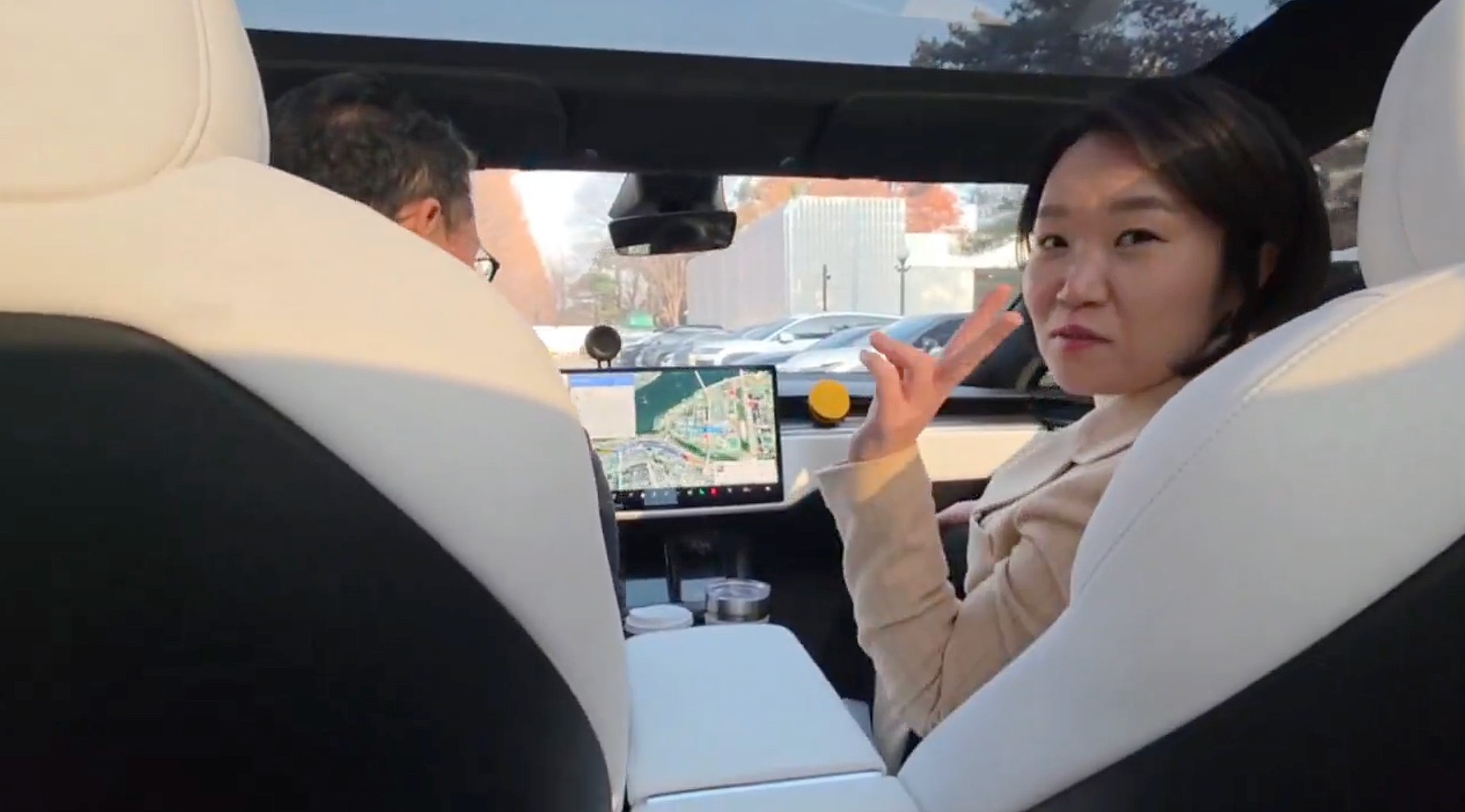
Tesla Full Self-Driving got its first sparkling review from South Korean politician Lee So-young, a member of the country’s National Assembly, earlier this week.
Lee is a member of the Strategy and Finance Committee in South Korea and is a proponent of sustainable technologies and their applications in both residential and commercial settings. For the first time, Lee was able to utilize Tesla’s Full Self-Driving technology as it launched in the country in late November.
Her thoughts on the suite were complimentary to the suite, stating that “it drives just as well as most people do,” and that “it already feels like a completed technology.”
드디어 오늘, 서울에서 테슬라 FSD 체험 했습니다.
JiDal Papa님의 모델S 협찬에 힘입어^^ 파파님 정말 감사합니다.
국회 -> 망원시장 -> 홍익대 -> 국회 복귀 코스였고요.
이미 무인 로보택시를 타봐서 그런지 신기함은
덜했지만, 웬만한 사람만큼 운전을 잘하네요.이미 완성된 기술이라고… pic.twitter.com/8pAidHBpRG
— 이소영 국회의원 (Soyoung Lee) (@im_soyounglee) December 17, 2025
Her translated post says:
“Finally, today I got to experience Tesla FSD in Seoul. Thanks to the Model S sponsored by JiDal Papa^^, I’m truly grateful to Papa. The route was from the National Assembly -> Mangwon Market -> Hongik University -> back to the National Assembly. Having already ridden in an unmanned robotaxi, the novelty wasn’t as strong for me, but it drives just as well as most people do. It already feels like a completed technology, which gives me a lot to think about. Once it actually spreads into widespread use, I feel like our daily lives are going to change a lot. Even I, with my license gathering dust in a drawer, don’t see much reason to learn to drive a manual anymore.”
Tesla Full Self-Driving officially landed in South Korea in late November, with the initial launch being one of Tesla’s most recent, v14.1.4.
It marked the seventh country in which Tesla was able to enable the driver assistance suite, following the United States, Puerto Rico, Canada, China, Mexico, Australia, and New Zealand.
It is important to see politicians and figures in power try new technologies, especially ones that are widely popular in other regions of the world and could potentially revolutionize how people travel globally.








